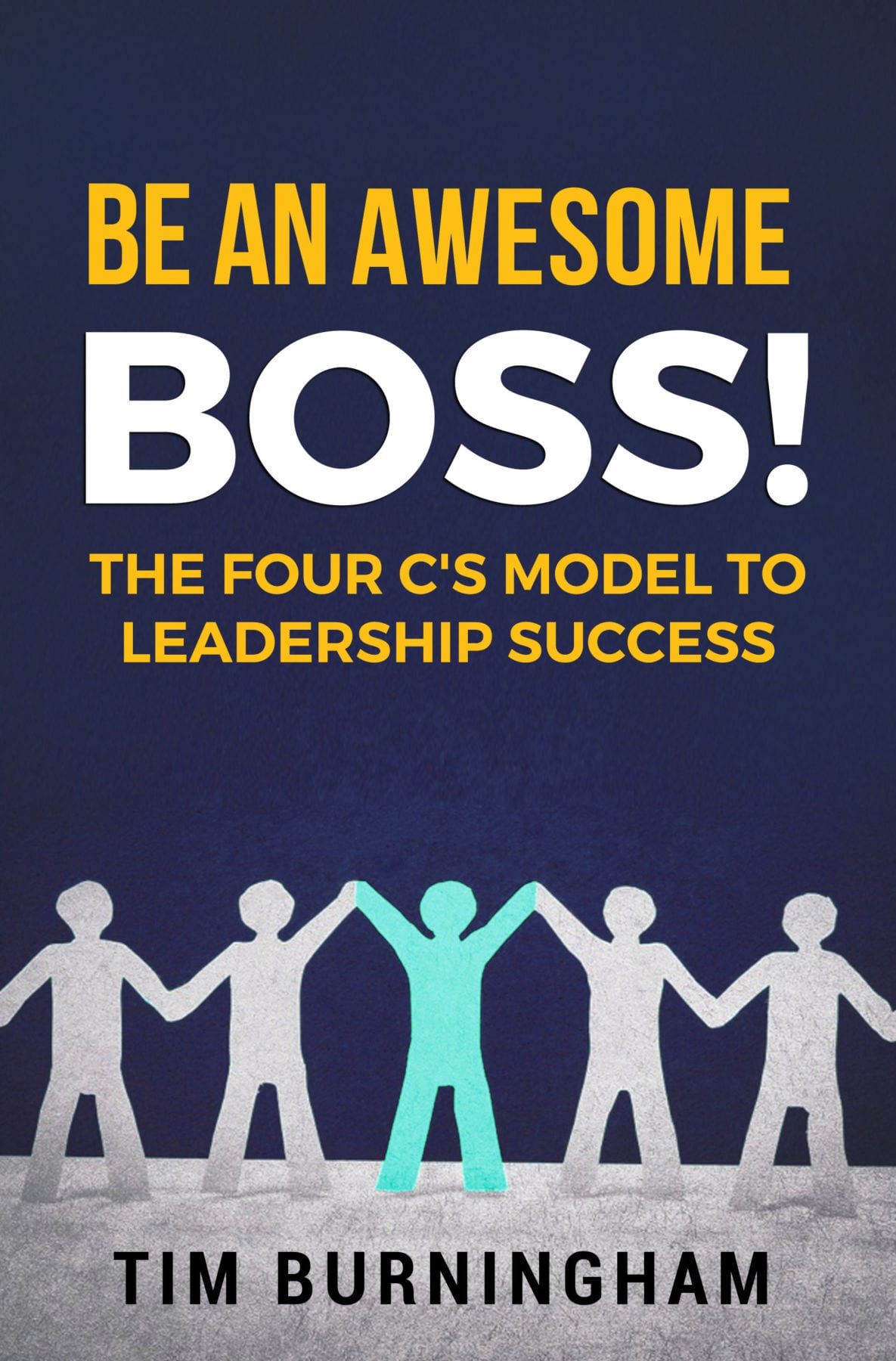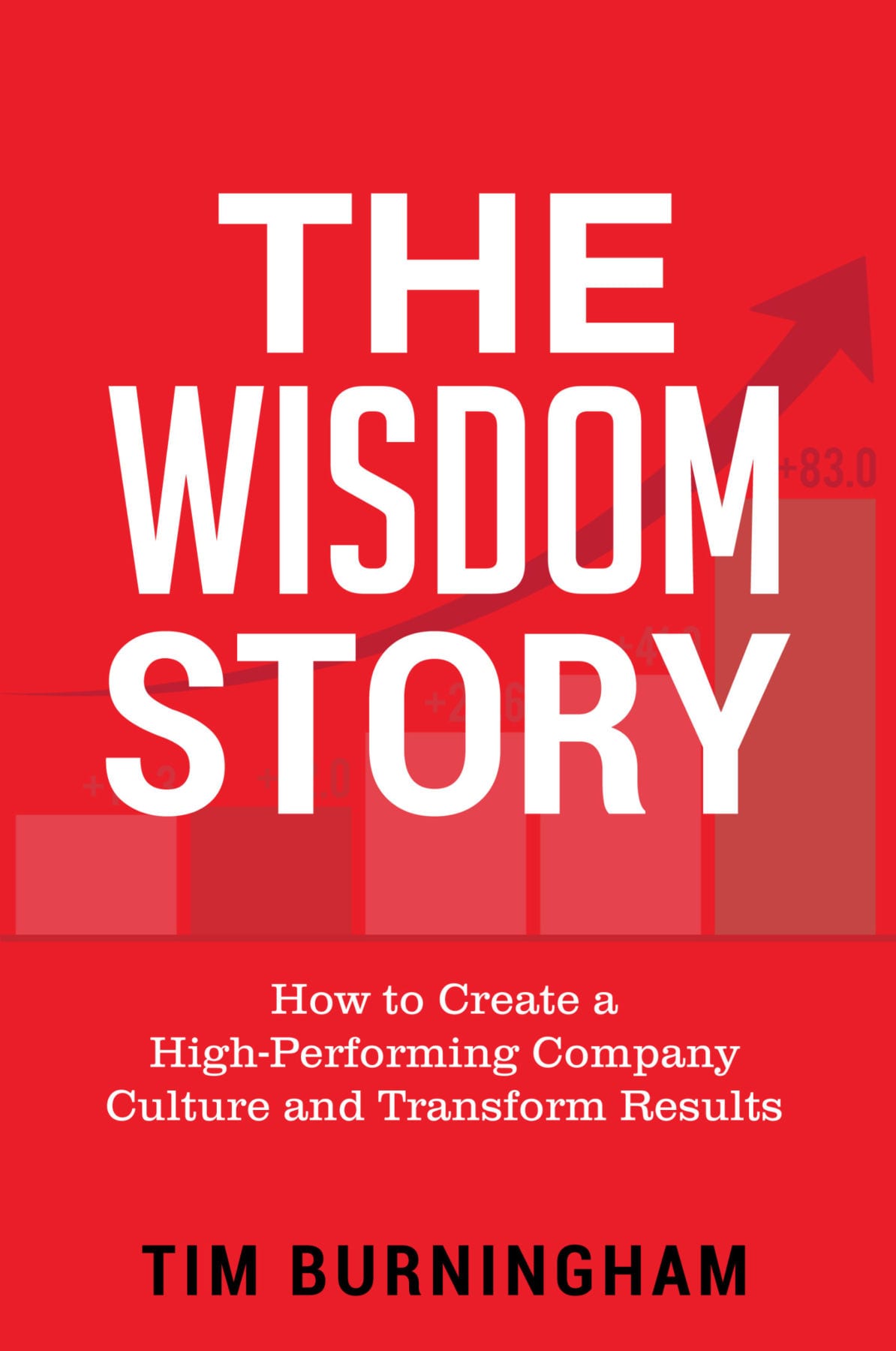As has become tradition on the podcast, during this last episode of season four Tim answers important questions received from listeners throughout the season and provides vital insights on meaningful topics such as the importance of the structure of The Four C’s Model to Creating a Healthy Company Culture, how charity influences the model, and the relationship between accountability and trust. Checkout this last episode of the season to learn how to better establish a strong organizational culture.
To learn more about creating a great company culture, check out my book, Be an Awesome Boss.
Transcript
I’m Tim Burningham and this is the Culture guide podcast.
Hello and welcome to the last episode of season four of the Culture Guide Podcast.
Can you believe it? It’s hard to believe we’re already on episode 10 of Season 4.
This podcast exists to help you create an amazing company culture and we believe an amazing company culture can transform the results within any organization.
So here we are at the end of the season, we’ve covered some important topics this season, highlighted by episodes 3, 4,5,6, and 7 in my mind…where we really dove in and shared some specific systems and strategies you can use to implement each of the 4 C’s from the 4 C’s Model to create a healthy company culture.
So if you haven’t listened to those episodes yet, I’d strongly encourage you to go back and take some time and listen to those episodes.
Also, as a reminder, we’ve created a new website named after the title of my book. This website includes free information, invaluable tools to help you create a healthy company culture, and that website is BeAnAwesomeBoss.com that’s BeAnAwesomeBoss.com, so go there and check it out . Again there’s lots of free tools and information that can help you implement the 4 C’s model into your organization.
Now it’s become a bit of a tradition for us to use the last episode of each podcast season to answer some questions that we received from you, our audience about some of the information we’ve shared in our episodes during the season. So in staying true to that tradition, today on the podcast will be answering a few of your questions that we saved during the season
Order of the 4 C’s Model
So the first question is about the structure of the 4 C’s Model to create a healthy company culture and it is… Is there significance in the order of the C’s in the pyramid of the model. For example, does one C always occupy the bottom space in the pyramid or are the C’s in the pyramid interchangeable.
So this is a good question. There is definitely a significance to the order in the pyramid and building a healthy company culture. Wise leaders start at the bottom of the pyramid and work their way up. Now if you remember that bottom section in the model is clarity. So yes, Clarity always occupies the bottom portion of the pyramid, and yes, it is the best place to start in building a healthy culture. The reason is…is because clarity allows you to establish a solid foundation for which the rest of your culture can be built upon.
Without clarity, your culture will be on shaky ground. Without clarity, your organization becomes highly susceptible to damaging things such as confusion within the organization or infighting or drama, or backchannel communication or gossip, and really a lack of motivation.
Clarity is a critical first step because it aligns a team and organization and it helps build cohesion among that team and organization. So in other words it enables a workforce to all row the boat in the same direction, thus providing clarity first enables the other C’s to add value to your culture. Without clarity, the other C’s won’t stand much of a chance to significantly improve the health of your culture.
Now, on the flip side of that, however, with high levels of clarity…and then the other C’s added on top of it, it will produce amazing results in transforming the health of your culture. So yes, there is significance to the order in the pyramid and no the seeds within the pyramid are not interchangeable. So the order of the pyramid is clarity 1st and then focus on establishing consistency and then you add in celebration.
Charity’s Role in the Model
The next question received is also a question about the structure or the layout of the 4 C’s Model, and this question came from episode 6 on Charity. And that question is why isn’t charity part of the pyramid like the other 3 C’s?
So the reason why Charity isn’t part of the pyramid is because it plays a little bit of a different role in the model. Increasing charity within your organization amplifies the effectiveness and the impact of the other three C’s that are part of the pyramid. So in the last question I talked about the significance of following the steps in the pyramid, which again is first clarity and consistency and then celebration.
But charity is something you should be trying to show and establish all along the way throughout the process. So charity is about the approach that you take when implementing the other 3 C’s. So I can introduce and try to establish clarity with or without charity. So I may say hey, we need to be clear on this and everyone needs to understand this or else. Or I can say hey guys, we need to be clear on this and this is why…let me explain it to you and let me show you why it matters and how it will impact you.
So hopefully you can kind of see the difference there. Again we can take any action with or without charity. And the more we provide clarity and establish consistency and add celebration…and we do it in a way with charity that shows charity…true care and concern for others..then that impact of that C will be much higher, will be much greater.
So again, charity acts as a magnifier or an amplifier of our efforts around clarity, consistency and celebration. So charity encircles the pyramid because it amplifies or magnifies the impact of the other three C’s that are in the pyramid now.
If you’d like to learn more about charity and how it works in the model, you can always go back to episode nine of season one of the Culture Guide Podcast, where I explain in greater detail why charity is not part of the pyramid, but instead encircles the pyramid.
What to do When Leaders Argue

So for those who haven’t listened to episode 8 yet, and even for those who have..here is the scenario I presented back in that episode that Lindsey is talking about. So let’s go back and listen to that real quick. I want you to imagine this for a minute. You’re the CEO of an organization and two of your top leaders, the CFO and the Director of Marketing are sitting in front of you to talk about the company’s advertising budget.
The director of marketing is certain you should exceed your budget and place an ad in a popular industry magazine. However, the CFO argues that the ad is very expensive and that it would put the Marketing Department over budget. The CFO also adds that if the Director of Marketing had planned better and spent his budget more wisely, then he would still have the funds to spend on the ad.
The Marketing Director responds that the marketing budget was never adequate from the very beginning of the year, especially with the revenue goals that were set forth by the organization. He shares he’s certain that this ad will more than pay for itself in an increase in sales and then adds that the CFO was the person to blame for their lack of budgeted advertising dollars in the first place.
The CFO then rolls their eyes and looks at you and states, you know how the other Department leaders will respond if we allow this to happen, don’t you?
So…so coming back to the present time now and to answer the question, there are a couple of things going on here that I would take note and address as the CEO in this situation. There’s obviously some turmoil between these two colleagues and there’s some issues there, and so first it sounds like there was a lack of commitment and perhaps some ambiguity regarding the marketing budget from the beginning of the year, So that’s probably on me as the CEO.
However, the fact that the marketing director is bringing it up now many months down the road from when the decision was made and then placing blame on the CFO is going to be really problematic for me as the CEO. So I would have a very serious conversation with my director of Marketing about that and I would ask them why they didn’t bring up their concerns earlier and voice their opinions more strongly during the budgeting process…like why is this coming out now that you’re feeling so upset about the budget?
So I would certainly be concerned with that comment. I’d also remind the Director of Marketing and actually the CFO that I’m the one who ultimately approved the budget, and if the director of Marketing wanted to blame anyone they really should be blaming me.
Now, regarding the CFO, I wouldn’t be thrilled that they’re rolling their eyes as their colleague shares their opinions and concerns, so I also plan to have a conversation with her offline about appropriate behavior.
Now, going back to the moment at hand, which ended with the CFO asking if I knew what would happen if I went with the marketing Director suggestion. I would simply change the direction of the discussion and say something like we know what’s most important here, right? We know what we’re trying to accomplish and what our mission is in this group in this room, right?
And then, assuming they did know, I would have them answer that and share what they believed to be the mission was and make sure that we were on the same page… and then again, assuming they did know and had a good understanding of the mission, I would then ask the question that is presented in that episode. So I asked….”So what decision will best help us live our mission and values?
So, putting aside our biases and what we believe is right and wrong at this point in time…what we need to decide is what is going to help us best live our mission. What decision will help us accomplish what we as a collective group are trying to accomplish? And then I would hash it out from there. So hopefully that’s helpful to you and add some more insight into how I’d handle the scenario that was described in Episode 8.
Trust and Accountability
The final question I wanted to address today comes from Eric from Episode 9 and he asks, I know trust is important, but what about accountability? So this is a good question. Accountability is super important to creating a cohesive team into producing results.
I think, however, in order to build accountability, you need trust first and without trust
first, accountability is hard to sustain. The reason I say this is because if I don’t trust you, then I’m going to worry how you’re going to react or how you’re going to respond. Or perhaps how you’re going to retaliate or negatively perceive me if I hold you accountable. Thus, I’ll be much less likely to actually do it. I’ll probably only do it under the most extreme circumstances, and I’ll probably do it in a way that isn’t a great way to approach it. So without trust, most likely I’ll shy away from accountability.
If however, we have a relationship where I believe we have the same goals in mind, the same objectives and mission…where I feel like I know how you might respond and that we have an established understanding that hey we all make mistakes and that nobody’s perfect, and that we’re here as a team to push each other to make each other better and to hold each other accountable. Then I’ll be much more likely to actually again hold that person accountable. And it isn’t as likely that they will take it the wrong way.
Unfortunately what often happens is that trust has not been established and then I go and try to hold someone accountable. Now when I do that, it’s likely that the person I’m trying to hold accountable will take it the wrong way. They may get defensive. They may assume I have bad intentions, they may blow it off and just ignore it completely, or they may get offended and become angry. Regardless of the reaction, without trust, most likely they won’t be focused on the issue, and they certainly won’t be focused on resolving it, and instead they’ll be focused on the person who’s trying to hold them accountable…because in their mind they may think this person doesn’t even know me…like how dare they try to hold me accountable. They didn’t…They know very little about me.
So without at least some trust level, accountability doesn’t work very effectively. Thus teams should start by establishing trust 1st, and let me say vulnerability based trust that we talked about in episode 9, and then once some level of trust has been established, accountability can be effective.
So hopefully our podcast today has helped answer some questions and has provided some additional insight and input into our previous episodes during the season.
Again, thank you so much everyone. It’s been great having you listen in. We have another season in the books now with The Culture Guide podcast. Again, please leave us a review on iTunes and share podcasts with a friend and we will be back for season five of the podcast at the beginning of 2020. Yeah. So be on the lookout for that, thanks.
Again, thanks for listening today, I hope you have a great end to your year as you work to build a healthy company culture and we’ll see you in 2020.











Leave A Comment
You must be logged in to post a comment.